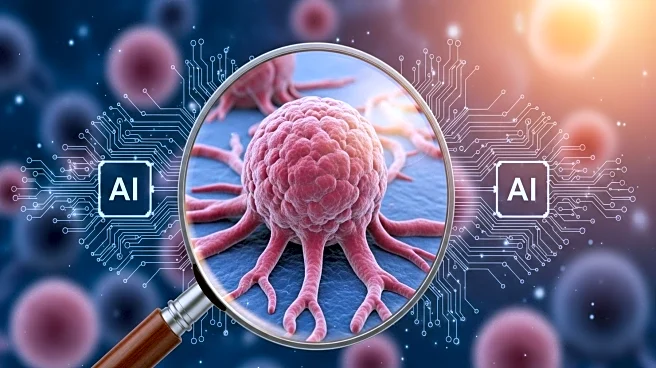What's Happening?
A new AI model, developed to mimic pathologist-like decision-making, has been introduced for Gleason grading in prostate cancer. This model uses a concept bottleneck strategy to predict explanations directly for each pixel, providing inherent explainability. The AI system, named Gleason XAI, aims to improve the accuracy and interpretability of prostate cancer diagnoses by offering detailed explanations for Gleason patterns. The model was trained using a comprehensive ontology developed in collaboration with expert uro-pathologists, ensuring that the AI's decisions can be verified by human experts.
Why It's Important?
The introduction of explainable AI in medical diagnostics is crucial for enhancing the accuracy and reliability of cancer grading systems. By providing clear explanations for its decisions, Gleason XAI can help pathologists make more informed diagnoses, potentially leading to better patient outcomes. This technology addresses the challenge of high interobserver variability in Gleason grading, offering a standardized approach that respects clinical uncertainty and variability in human judgment.
What's Next?
Further development and validation of the Gleason XAI model are expected, with potential expansion to other types of cancer grading systems. Researchers may explore integrating this technology into clinical practice, providing pathologists with a powerful tool to enhance diagnostic accuracy. Collaboration with medical institutions could facilitate the adoption of this AI model, improving cancer diagnosis and treatment planning.
Beyond the Headlines
The use of AI in medical diagnostics raises ethical considerations, including the need for transparency in AI decision-making processes and the potential impact on pathologists' roles. Ensuring that AI systems complement rather than replace human expertise is essential for maintaining trust and accountability in healthcare.










